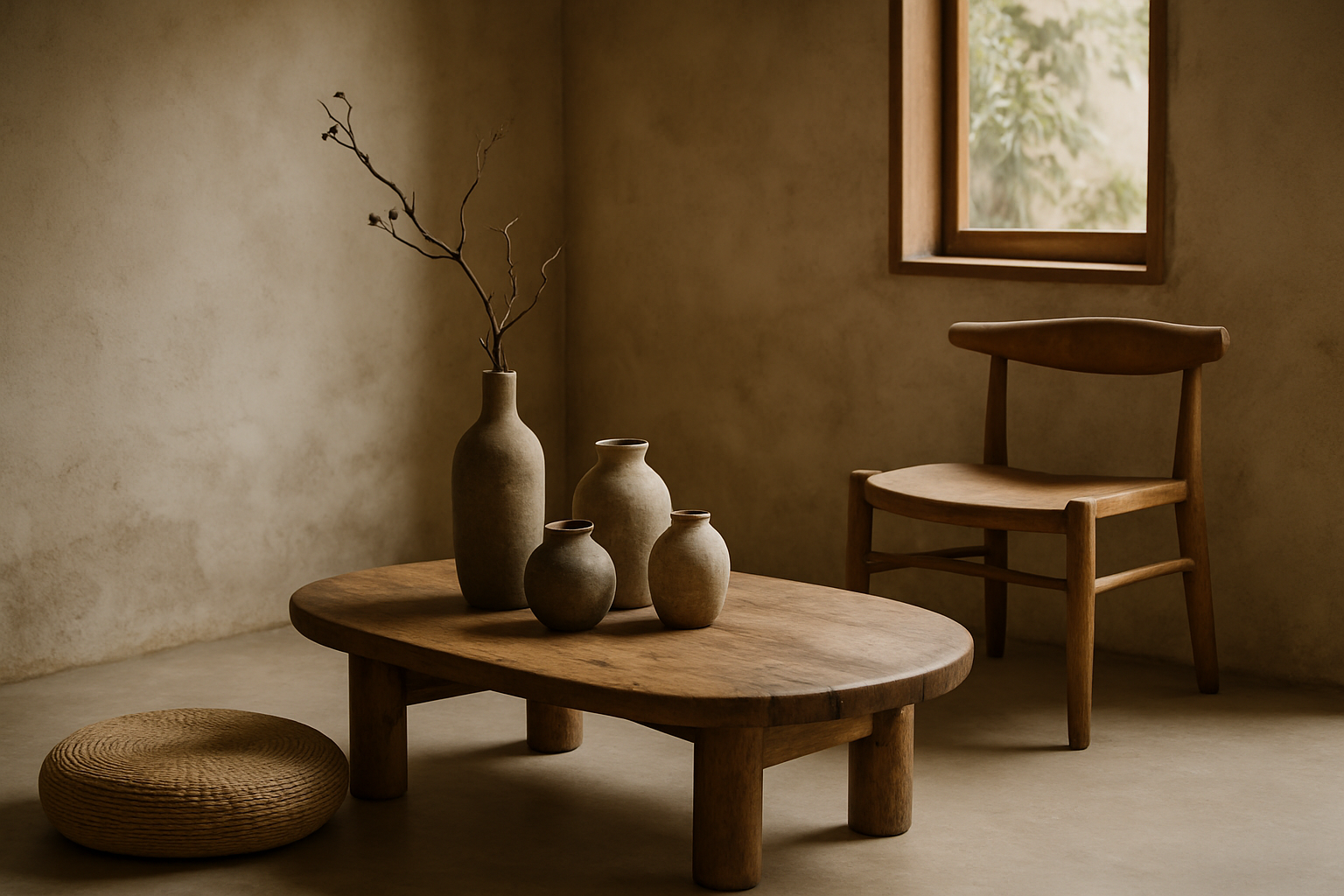Wabi-Sabi: The Art of Imperfect Beauty in Home Design
Embracing flaws and finding beauty in the worn and weathered, Wabi-Sabi is reshaping how we approach home aesthetics. This ancient Japanese philosophy, long revered in its homeland, is now captivating Western interior designers and homeowners alike. But what exactly is Wabi-Sabi, and how can it transform our living spaces into havens of serenity and authenticity?

The term Wabi-Sabi itself is difficult to translate directly. Wabi originally referred to the loneliness of living in nature, away from society, while Sabi meant withered or lean. Over time, these meanings evolved, with Wabi coming to represent rustic simplicity and Sabi the beauty that comes with age.
In the context of interior design, Wabi-Sabi encourages us to find contentment in the imperfect, to cherish objects with history, and to create spaces that feel lived-in and authentic rather than polished and pristine.
The Antidote to Perfection Culture
In an era dominated by social media-worthy interiors and the pressure to maintain picture-perfect homes, Wabi-Sabi offers a refreshing alternative. This philosophy challenges the notion that our living spaces should be flawless showcases, instead promoting the idea that true beauty lies in the unique, the handmade, and the lovingly worn.
Wabi-Sabi interiors eschew the mass-produced in favor of artisanal pieces, each with its own character and story. It’s about appreciating the patina on a well-used wooden table, the subtle irregularities in hand-thrown pottery, or the gentle fading of natural fabrics exposed to sunlight over time.
By embracing Wabi-Sabi, homeowners can create spaces that feel more personal, lived-in, and ultimately, more comfortable. It’s an approach that values sentiment over perfection, history over novelty, and authenticity over artificial polish.
Incorporating Wabi-Sabi Elements in Your Home
Bringing Wabi-Sabi into your home doesn’t require a complete overhaul of your existing decor. Instead, it’s about shifting your perspective and making thoughtful choices that align with the philosophy’s core principles.
Start by introducing natural materials like wood, stone, and clay. Look for pieces that showcase the inherent beauty of these materials, including their knots, grains, and variations in color. Opt for furniture and decor items with simple, organic forms that feel grounded and unpretentious.
Embrace asymmetry in your arrangements. Rather than perfectly aligned gallery walls or symmetrical furniture layouts, allow for some intentional imbalance. This creates a more dynamic, less contrived feel in your spaces.
Incorporate handmade items that bear the subtle marks of their creators. This could be anything from a slightly wonky ceramic vase to a hand-woven textile with small irregularities. These imperfections add character and depth to your decor.
The Color Palette of Wabi-Sabi
The Wabi-Sabi color palette draws inspiration from nature, favoring muted, earthy tones over bold or artificial hues. Think of the soft greys of weathered wood, the warm browns of clay, the deep greens of moss, and the subtle blues of a cloudy sky.
These colors create a sense of calm and groundedness in a space. They work harmoniously together, allowing the textures and forms of your decor pieces to take center stage. When using color in a Wabi-Sabi inspired interior, think in terms of layers and subtle variations rather than stark contrasts.
Wabi-Sabi and Sustainability
One of the most compelling aspects of Wabi-Sabi in today’s context is its natural alignment with sustainable living practices. By valuing objects that age beautifully and can be repaired or repurposed, Wabi-Sabi encourages a move away from disposable consumer culture.
This philosophy promotes the idea of buying fewer, but better quality items that will last for years, if not generations. It celebrates the art of mending and sees beauty in visible repairs, such as the Japanese practice of Kintsugi, where broken pottery is repaired with gold-dusted lacquer.
Embracing Wabi-Sabi can lead to a more mindful approach to consumption, encouraging us to think carefully about each item we bring into our homes and to find joy in caring for and preserving the things we already own.
The Psychological Benefits of Wabi-Sabi Interiors
Beyond its aesthetic appeal, Wabi-Sabi can have profound psychological benefits when applied to our living spaces. In a world that often feels chaotic and overwhelming, a Wabi-Sabi inspired home can serve as a sanctuary of calm and authenticity.
By surrounding ourselves with objects that bear the marks of time and use, we’re reminded of the transient nature of life and the beauty inherent in change. This can foster a sense of acceptance and mindfulness, helping us to find peace in the present moment rather than constantly striving for an unattainable ideal.
Moreover, the emphasis on natural materials and forms can help to strengthen our connection to the natural world, even in urban environments. This connection has been shown to reduce stress, improve mood, and enhance overall well-being.
In conclusion, Wabi-Sabi offers a timely and thoughtful approach to home design that goes beyond mere aesthetics. It invites us to reconsider our relationship with our possessions and our living spaces, encouraging a more mindful, sustainable, and ultimately more satisfying way of creating a home. By embracing imperfection and finding beauty in the modest and the weathered, we can create interiors that not only look beautiful but also feel deeply personal and nurturing to the soul.





